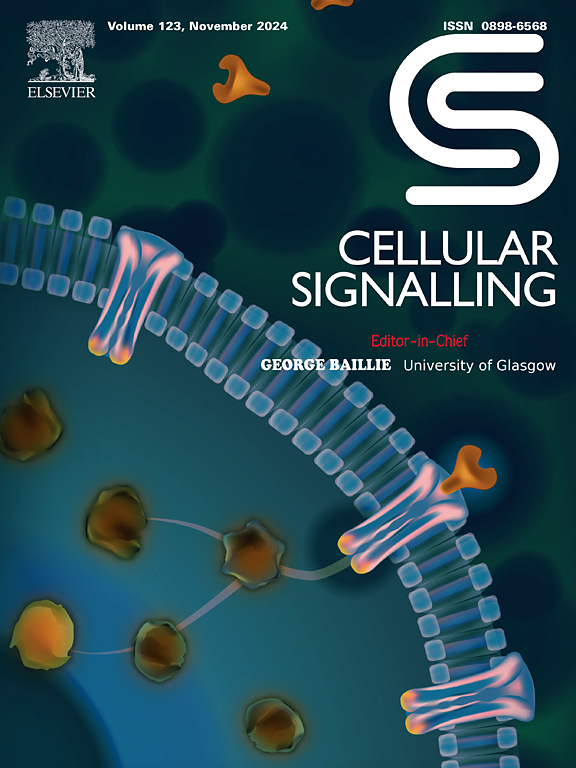SLC2A1的表达在年龄相关性听力损失小鼠模型中上调
IF 4.4
2区 生物学
Q2 CELL BIOLOGY
引用次数: 0
摘要
背景:年龄相关性听力损失(ARHL)是一种与衰老相关的常见问题。听力损失的一个典型原因是毛细胞不可逆转的死亡。此外,氧化应激对ARHL也有促进作用。然而,ARHL的潜在分子机制尚不清楚。方法ARHL样本来源于基因表达综合数据库的GSE153882数据集。采用Limma R-package对差异表达基因进行鉴定。枢纽基因是通过氧化应激基因与铜变形基因的交叉获得的。使用听觉脑干反应(ABR)测量听力功能。采用Western blot和免疫荧光法检测溶质载体家族2成员1蛋白(SLC2A1)、二氢脂酰基转乙酰化酶(DLAT)和二氢脂酰胺脱氢酶(DLD)在体外和体内的活性。结果氧化应激基因SLC2A1(又称GLUT1)与年龄相关性听力损失中的铜残基因相关。在ARHL小鼠模型中,SLC2A1、DLAT和DLD均升高。ABR记录显示,SLC2A1敲除降低了小鼠的平均阈值。敲除SLC2A1可减轻DLD和DLAT在体内和体外的影响。结论我们的研究结果强调SLC2A1是铜凸和ARHL的重要驱动因素。敲低SLC2A1通过抑制铜增生抑制ARHL进展。本文章由计算机程序翻译,如有差异,请以英文原文为准。
Expression of SLC2A1 is upregulated in a mouse model of age-related hearing loss
Background
Age-related hearing loss (ARHL) is a common issue associated with aging. One of the typical causes of hearing loss is the irreversible death of hair cells. In addition, oxidative stress contributes to ARHL. However, the underlying molecular mechanism in ARHL is not well understood.
Methods
The ARHL samples were from GSE153882 datasets of the Gene Expression Omnibus database. The Limma R-package was used to identify differentially expressed genes. The hub gene was obtained via intersection of oxidative stress genes and cuproptosis genes. Hearing function was measured using the auditory brainstem response (ABR). Western blot and immunofluorescence were used to examine solute carrier family 2 member 1 protein (SLC2A1), dihydrolipoyl transacetylase (DLAT) an dihydrolipoamide dehydrogenase (DLD) in vitro and in vivo.
Results
Oxidative stress gene SLC2A1 (also named GLUT1) is related to cuproptosis gene in age-related hearing loss. In the ARHL mice model, SLC2A1, DLAT and DLD were elevated. The ABR recordings showed that SLC2A1 knockdown lowered the average thresholds of mice. Knockdown SLC2A1 alleviated DLAT and DLD in vitro and in vivo.
Conclusion
Our findings highlight SLC2A1 as an essential driver of cuproptosis and ARHL. Knockdown SLC2A1 suppresses ARHL progression via inhibiting cuproptosis.
求助全文
通过发布文献求助,成功后即可免费获取论文全文。
去求助
来源期刊

Cellular signalling
生物-细胞生物学
CiteScore
8.40
自引率
0.00%
发文量
250
审稿时长
27 days
期刊介绍:
Cellular Signalling publishes original research describing fundamental and clinical findings on the mechanisms, actions and structural components of cellular signalling systems in vitro and in vivo.
Cellular Signalling aims at full length research papers defining signalling systems ranging from microorganisms to cells, tissues and higher organisms.
 求助内容:
求助内容: 应助结果提醒方式:
应助结果提醒方式:


